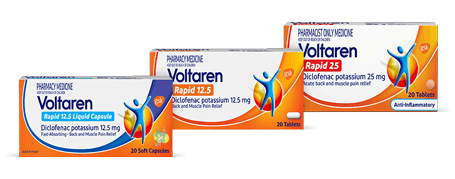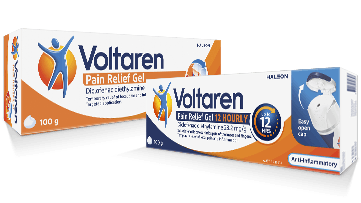What are suitable pain relief options for you?
Finding effective pain relief options can feel like an urgent mission when you’re experiencing pain. While we love taking a glass-half-full approach to life, looking on the bright side of pain is not always easy, nor is it always beneficial. Often, pain serves a purpose and ignoring it can have negative consequences, not to mention impact how your day, week or month is going. Figuring out suitable pain relief options for your pain type can be challenging. We’re here to help.
We understand that finding suitable pain relief options means a lot. It can mean not giving up on cooking a holiday meal for loved ones or gossiping with a friend on a walk around the block. It can mean living your life joyfully, without having to give up on the things you love. That’s why we’re here to help you make sense of what pain is and how to manage it.
What is pain?
Let’s dive in. Pain is an important part of how our bodies function. It can let us know that something isn’t quite right.1 In doing so, body pain alerts us to protect ourselves from further harm by prompting us to stop what we’re doing, take stock, and avoid repeated injury or damage to our bodies.
Acute pain can occur when an external stimulus, for example, touching a hot pan, triggers receptor nerve cells to send messages through your spinal cord to your brain. Pain is always subjective, so each of us experiences pain in our own way. Depending on its severity, as well as your body’s very own unique way of processing it, pain can bring about other physical symptoms, like nausea, dizziness and weakness.
Chronic pain, or pain that lasts for three months or more, differs from acute pain, or the temporary type of pain you may feel free from a specific disease or injury.2 Chronic pain is pain that has persisted beyond normal healing time.3
Although it hurts, some conditions like osteoarthritis can’t be cured, and therefore relieving the pain can help to maintain your quality of life. In this situation, it’s not a case of ‘no pain no gain’ - toughing it out isn’t necessarily the best course of action.
What are the differences between acute pain and chronic pain?

Acute pain typically comes on suddenly and is a sign that your body has suffered some kind of injury or disease. Maybe you strained your back picking up a box, or even stubbed your toe.
Or maybe you just twisted your neck the wrong way. (We hate when that happens!)
Acute pain is short-lived and should go away once the injury has healed. Short-term pain relief options can help keep you feeling comfortable until your injury heals.

Chronic pain lasts longer than acute pain.
If you think you may be experiencing chronic pain, you should consult your doctor to get to the root of what is causing it.
Pain relief options and causes by pain type
Body pain can have myriad causes. Understanding the type and cause of your pain will help you identify the preferred pain relief option for you.
The types of pain Voltaren gels relieve can be split up into three broad categories:
- Joint pain caused by mild osteoarthritis
- Muscle pain (myalgia)
- Soft tissue pain


Pain can be focused on a specific location on your body. Each of these requires slightly different care and management, sometimes merely due to how we tend to move and use our bodies.
Here are some of the most common pain locations:
- Back pain - Back pain is a common cause of body pain and can have a big impact on how you move about your day. Lower back pain can vary from a dull ache to sudden sharp pains.
- Neck pain- Whether a crick or a strain, in the neck muscles, it can be, well, a pain in the neck! From poor posture to simply turning your head wrong, neck pain can seem like it came out of nowhere.
- Wrist pain - We use our wrists all day long. Complex structures that they are, our wrists are prone to painful problems.
- Shoulder pain - Whether it's injury or sleeping on it in a strange position, our shoulders can be prone to strains and sprains. Shoulder pain can take the flourish out of daily movements.
- Ankle pain - Our ankles get a lot of use day in and day out. That's why ankle pain is no walk in the park.
- Hip pain - The hip is one of the largest weight-bearing joints in the body.4
- Leg pain – Leg pain can make it painful to carry out everyday activities like walking the dog, climbing upstairs, running for the bus or playing sports.
- Knee pain – Our knees do a lot for us on a daily basis. That’s why painful knees have a way of really stopping us in our tracks.
- Foot and ankle pain – Our feet and ankles are fine-tuned structures full of little bones and muscles, making them susceptible to a range of potential injuries.
- Muscle pain – Whether it’s a pulled muscle from a vigorous go at the gym or we just stood up funny, muscle pain, also known as myalgia, has a way of making its presence known throughout the day.
- Joint pain – Stiff, achy joints are a common cause of joint pain and can increasingly keep us from doing the things we love.











